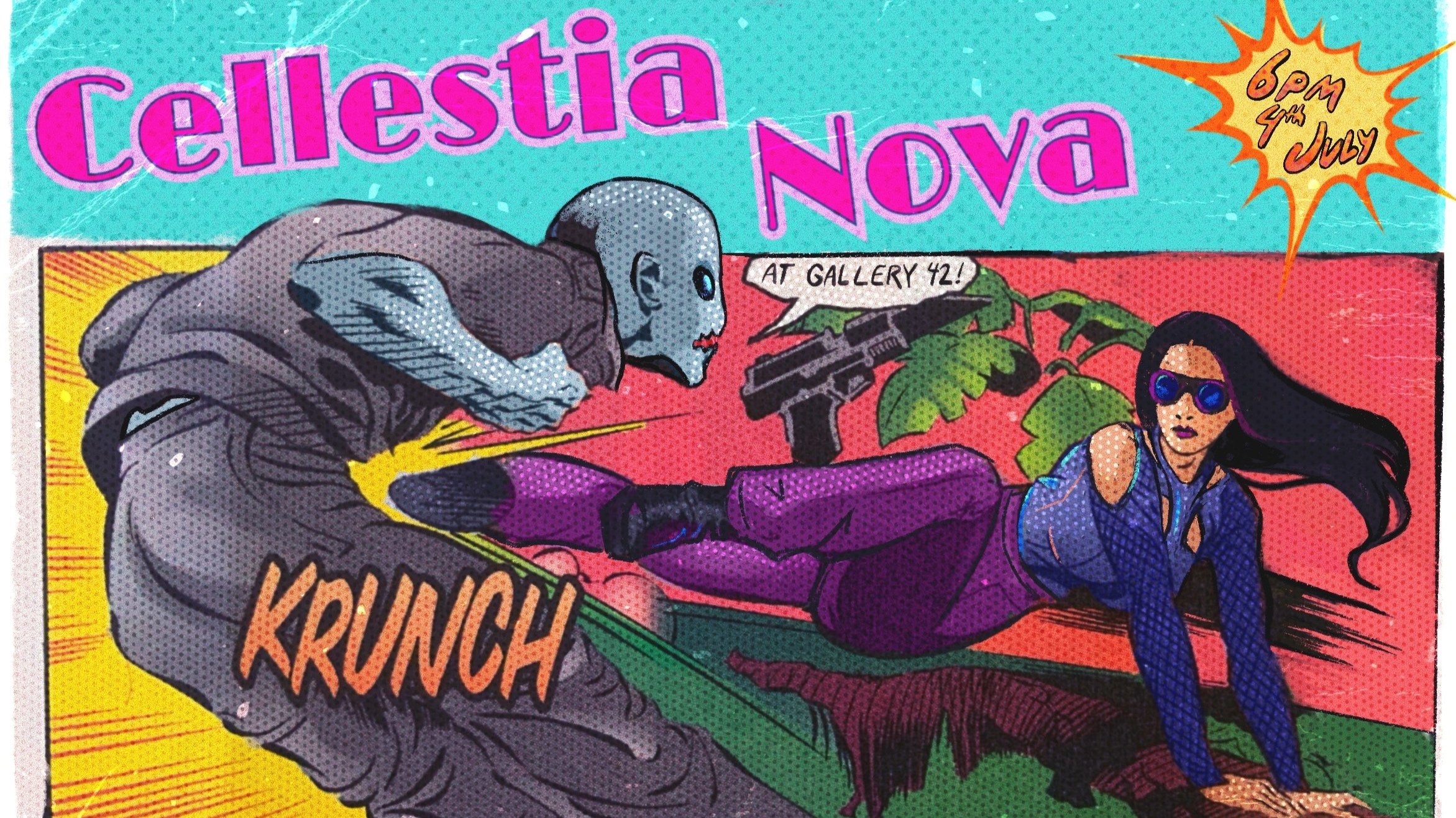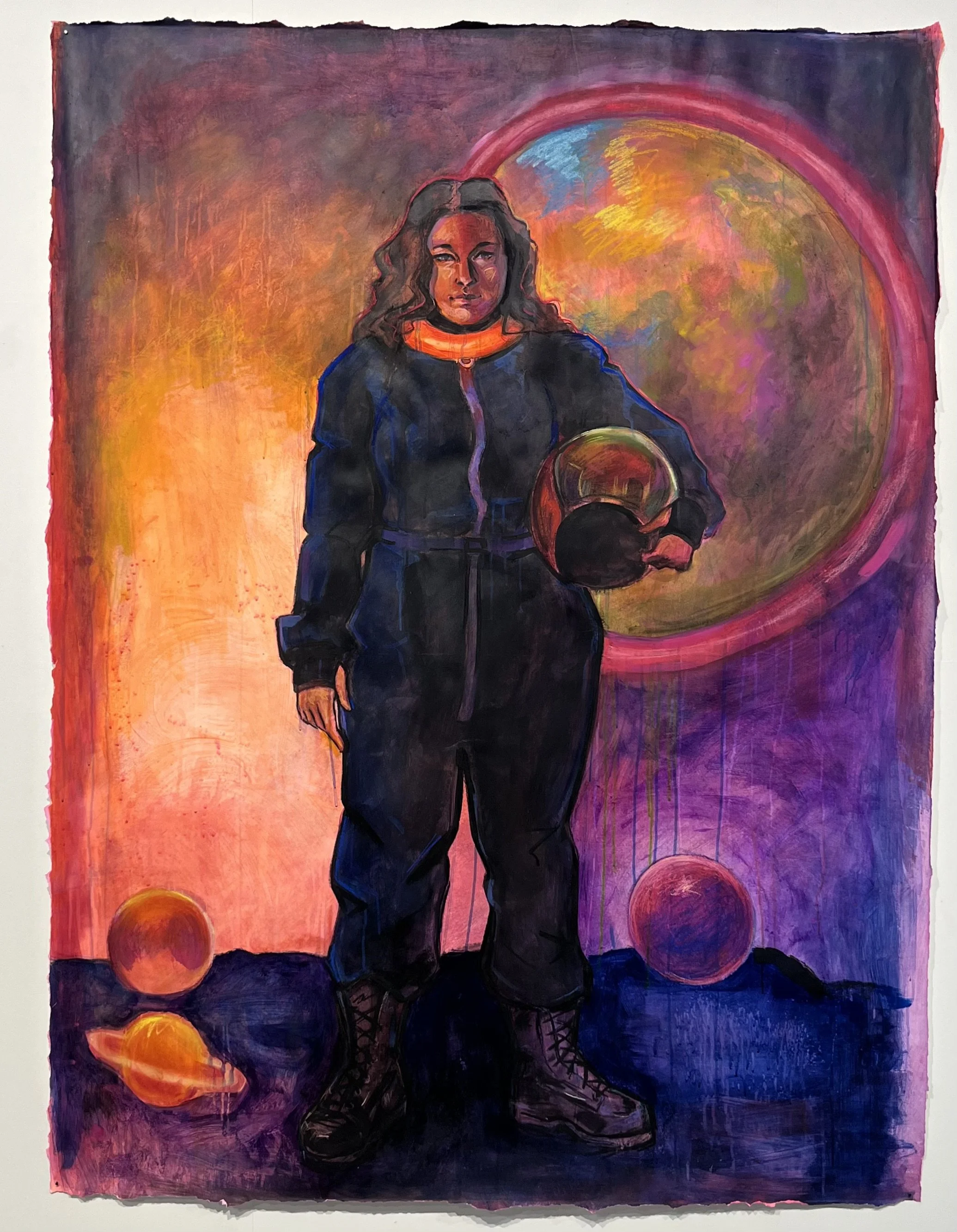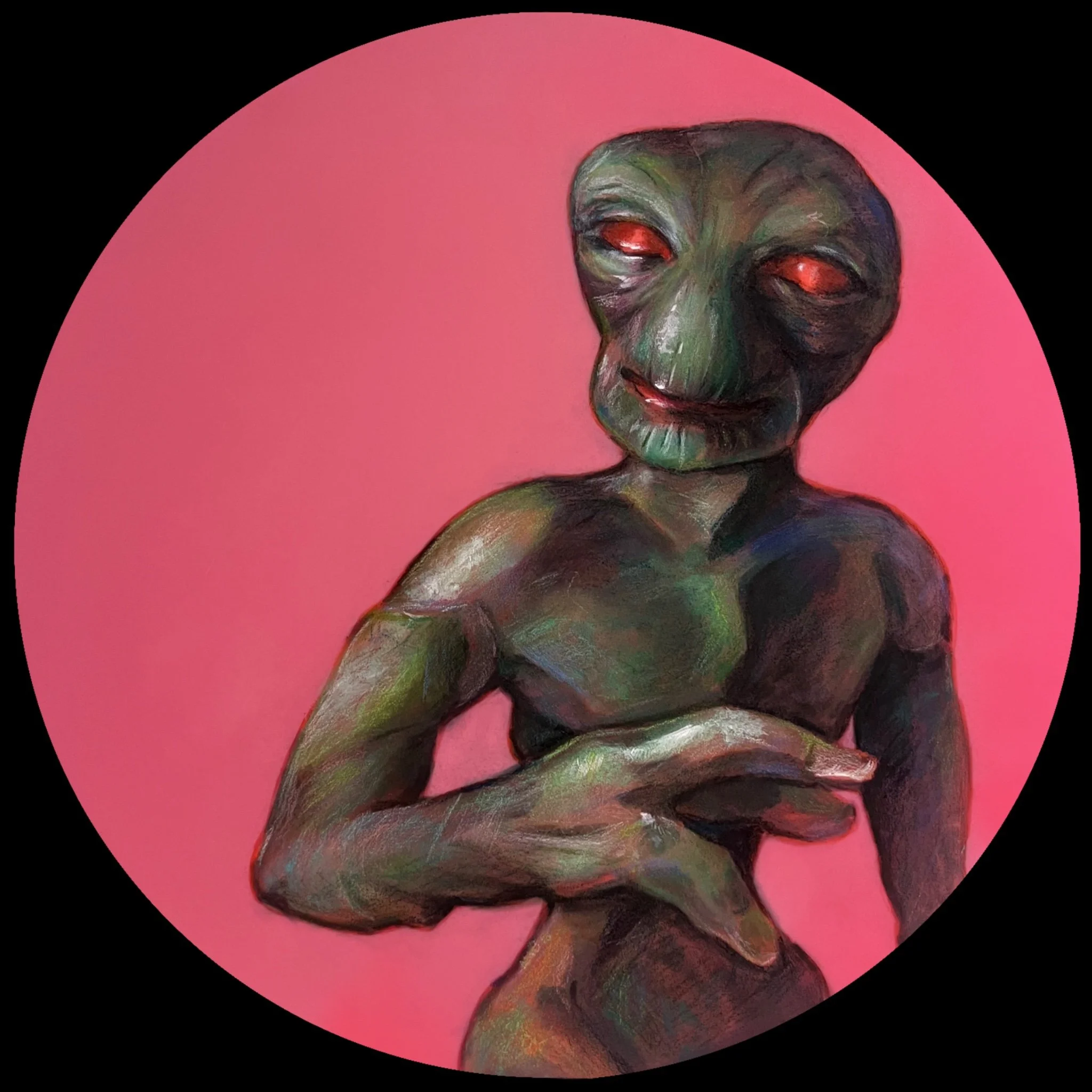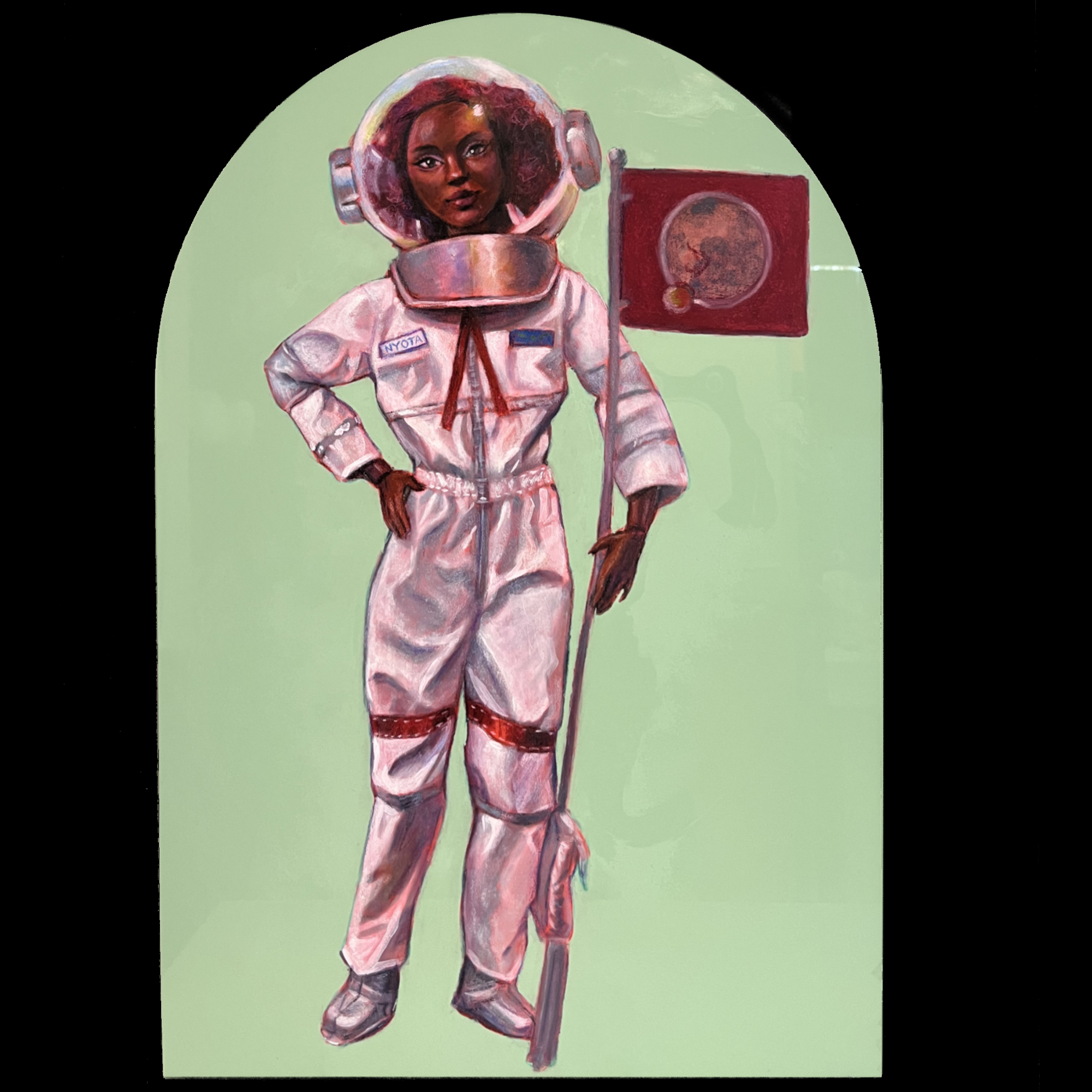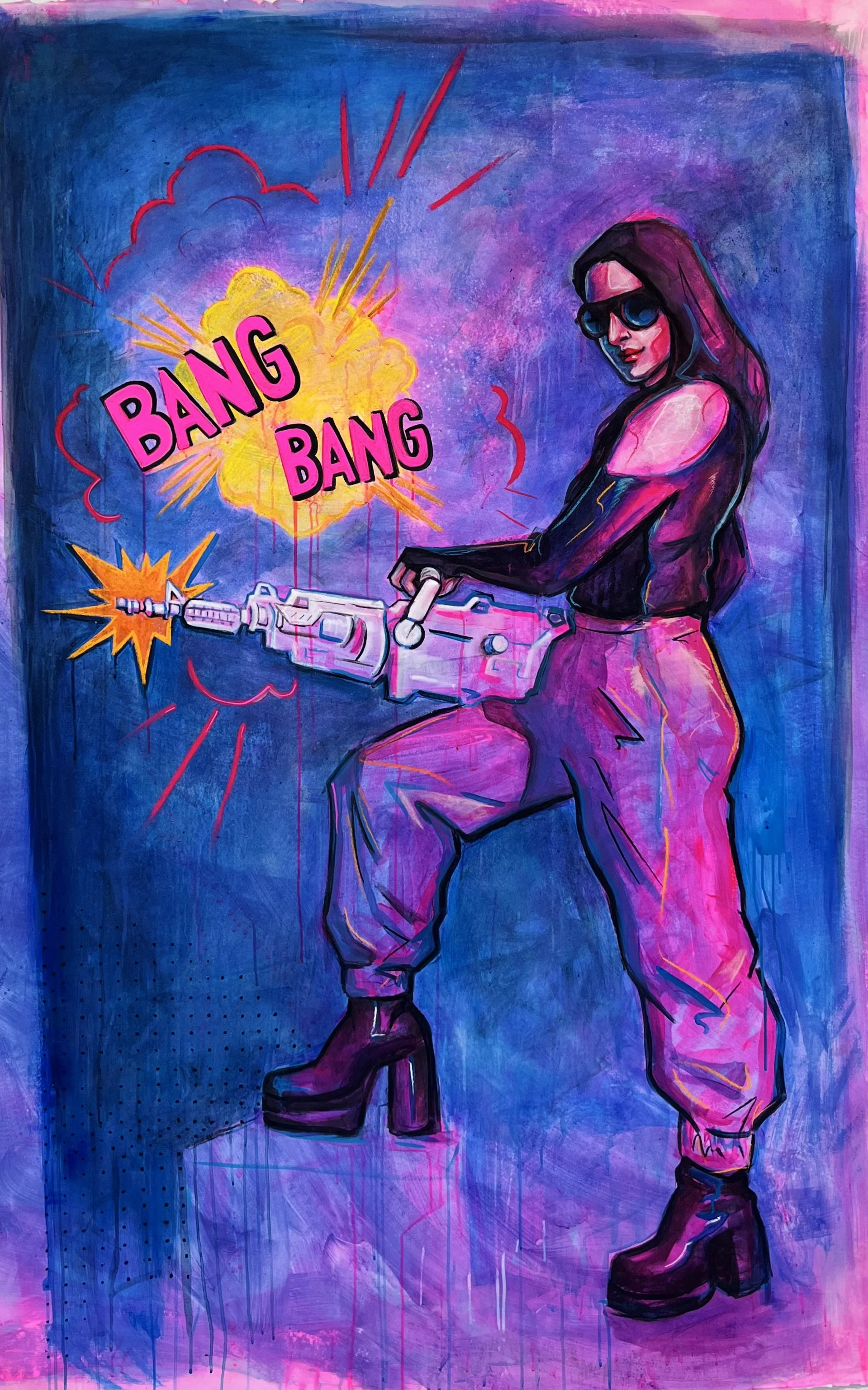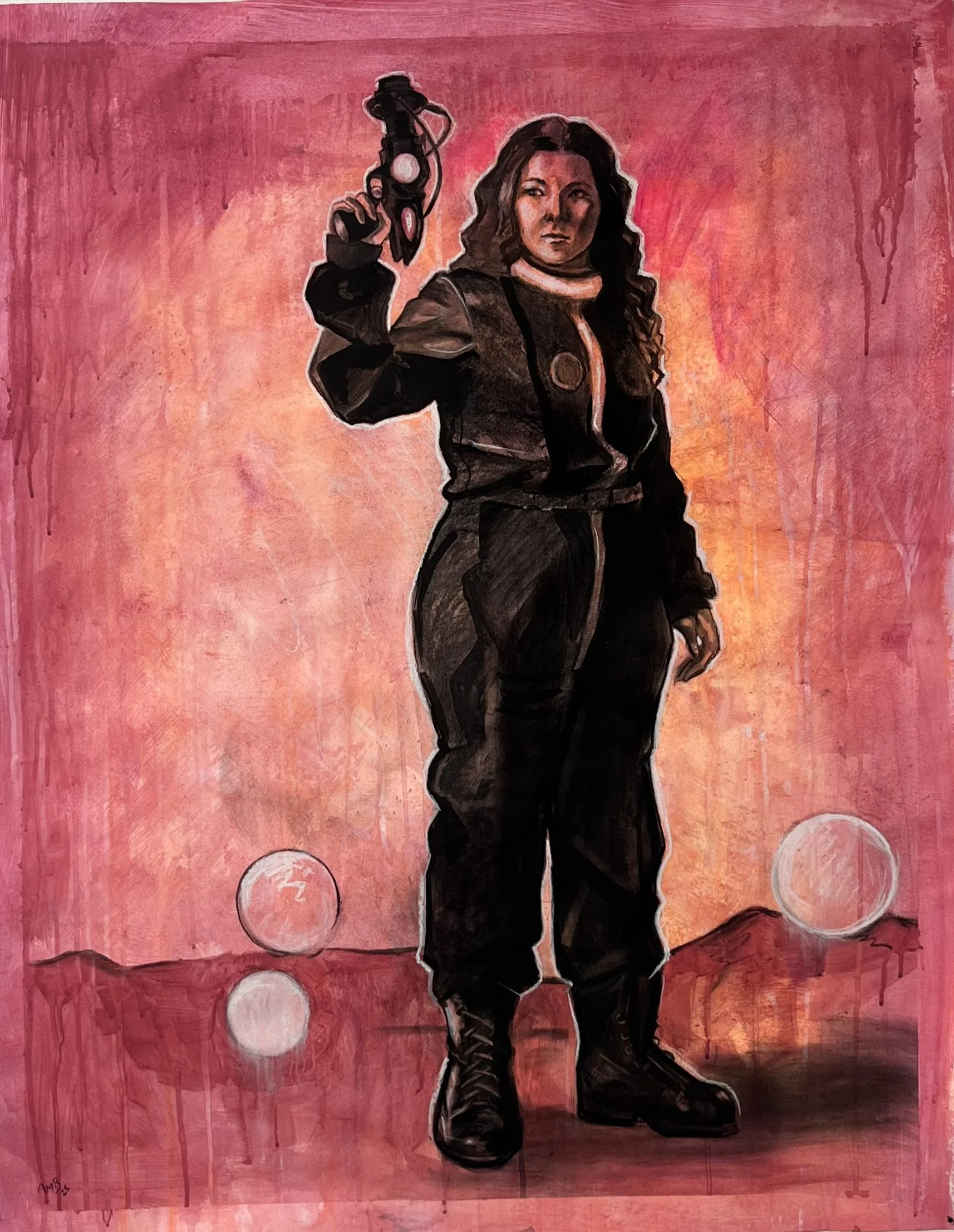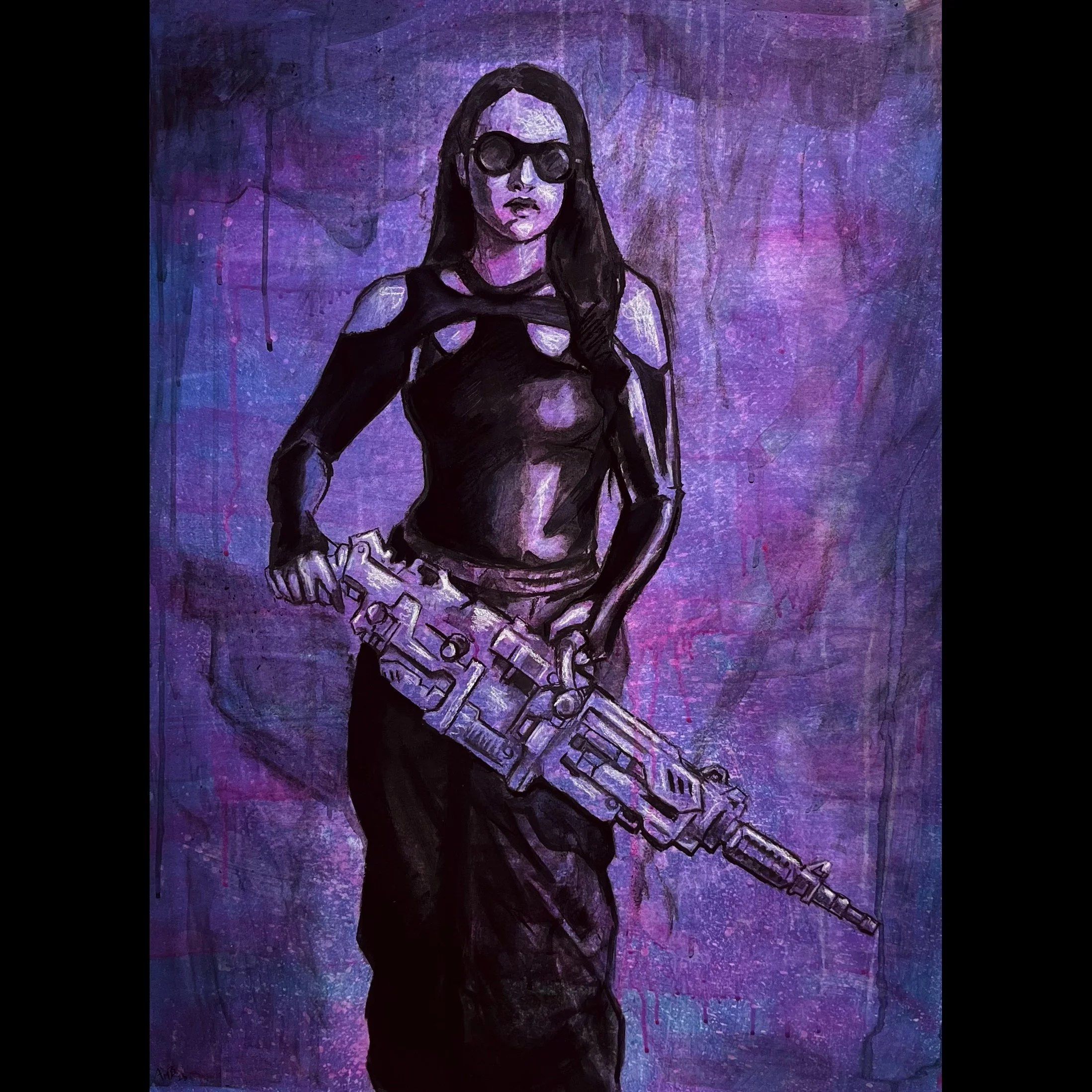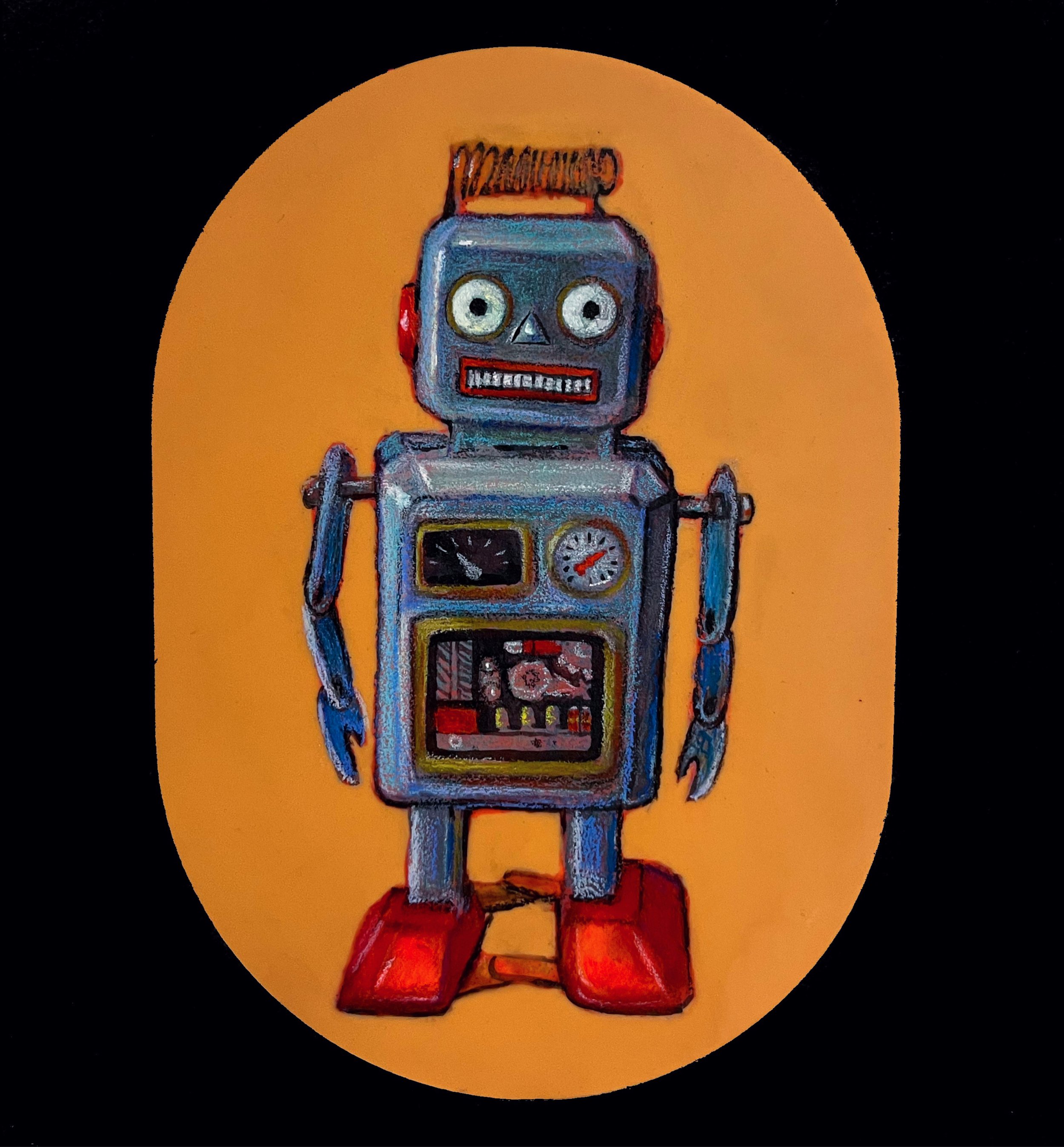Previous Exhibition
The exhibition is a celebration of feminine empowerment found in mid - late 20th century Sci Fi media and embraces the aesthetics and materiality of pop-culture expos and artists alleys.
Held in Jul 2025 at Gallery 42
X Ray | gesso, soft pastel and pencil on acrylic panel
Deep Space Portrait | gesso, soft pastel and pencil on timber panel
Cellestia Nova | gesso, soft pastel and pencil on acrylic panel
Captain Felicity | gesso, soft pastel and pencil on acrylic panel
M E R I D I A N | Gesso, acrylic, pan pastel, soft pastel & coloured pencil on CA grain paper
Space Oddity | gesso, soft pastel and pencil on acrylic panel
Strange New Worlds | gesso, soft pastel and pencil on acrylic panel
BANG BANG | Gesso, acrylic, pan pastel, soft pastel & coloured pencil on CA grain paper
Little Grey (Splergbert) | gesso, soft pastel and pencil on acrylic panel
Vortex | Gesso, acrylic, pan pastel, soft pastel & coloured pencil on CA grain paper
Armageddon Game | Gesso, acrylic, pan pastel, soft pastel & coloured pencil on CA grain paper
Fascination | gesso, soft pastel and pencil on acrylic panel
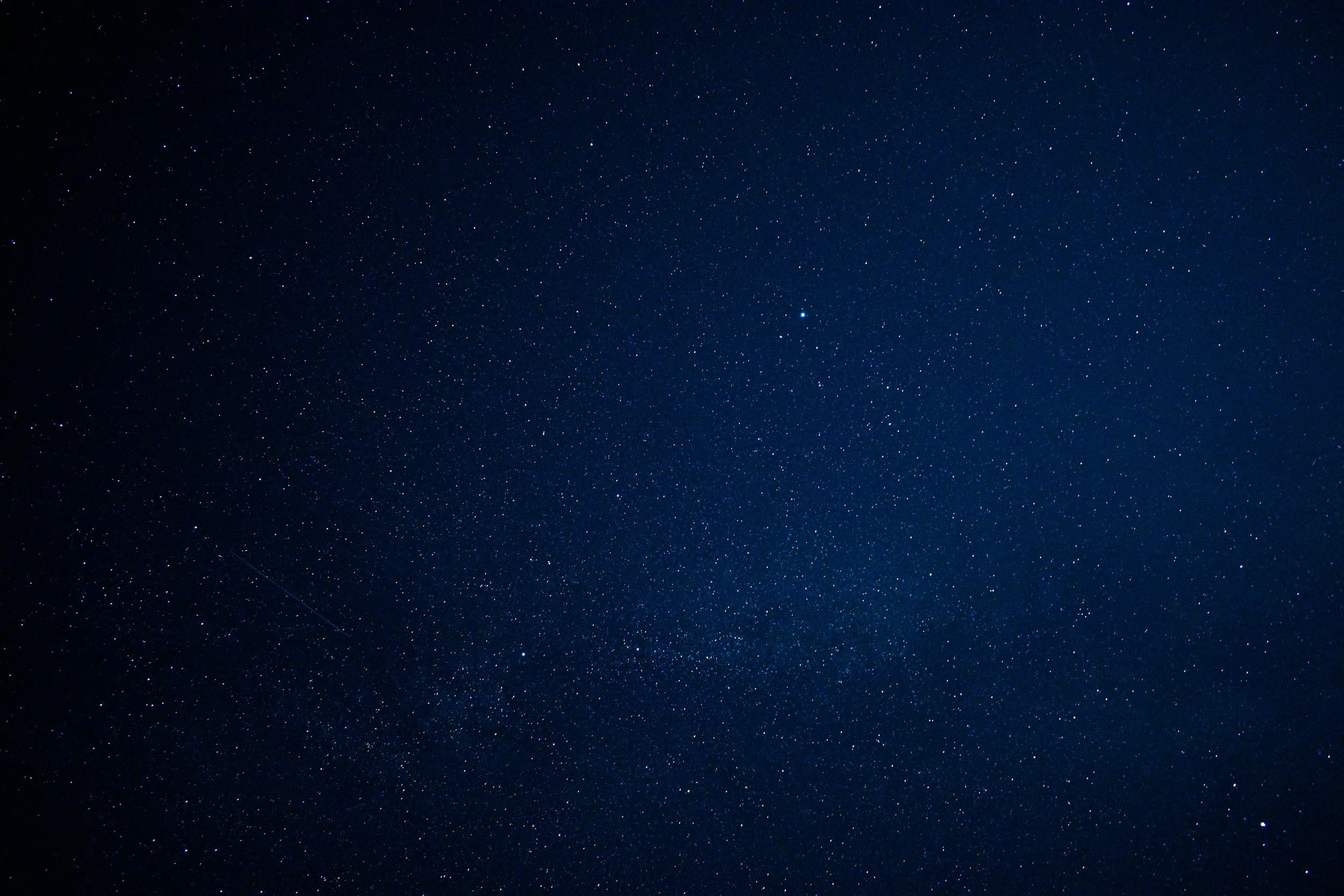
Exhibition Essay
Cellestia Nova is a celebration of feminine empowerment found within 20th Century Science Fiction media. Through this exhibition I aim to subvert preconceptions that the genre of science-fiction is designed, and intended for masculine audiences.
As a child of the ’90s, I was raised on a steady diet of 20th-century pop culture. Our household was filled with an array of books, tv shows and movies, most of which were fiction, predominantly fantasy and sci-fi. I greedily watched as much Star Wars and Star Trek, as I could. My parents read the novels of Isaac Asimov to me. And some of my fondest memories were sitting down to watch seasons of Doctor Who, Babylon 5, and Ocean Girl after dinner.
Growing up I identified with the women portrayed in the science fiction narratives I experienced. They fuelled my drive to explore, to learn and to delve deeper into my interests and passions. My imagination was filled with stories of female captains, scientists and rebels, who I could relate aspects of myself to, or aspire to be. These characters were quirky, complex, and powerful.
For much of my youth, I didn’t question that the feminine could be an infinite spectrum: clever and chaotic, nurturing and ruthless, glamorous and grotesque. Cellestia Nova is a return to the ideals and complexity that those heroines embodied. It’s a celebration of their impact through a return to the visual language of the Space Age.
However, science fiction has also acted as a mirror, one that reflects the anxieties, hopes, and limitations of the time that it was created in. The female characters I grew up watching often existed within realms of contradiction: they were given agency, intelligence, and depth, yet they were also clearly subjects of the male gaze. Sometimes the strongest of characters came wrapped in skin tight spandex - their narratives entangled with the expectations of desirability. But even through those distortions, I found power. The contradictions didn’t negate the impact they had on me. They made it more complicated, more layered, and in some ways more honest. Feminine power in sci-fi wasn’t neat or tidy, it was messy, excessive, but always important.
My choice to draw on shaped acrylic panels is an intentional push away from the traditionally masculine aesthetic of gallery minimalism. The rounded edges, plastic surfaces and vibrant colours along with my use of excessive decoration and inclusion of toys in the show pays homage to the domestic, the decorative, and childhood play. It’s a reclamation of kitschy visual styles that are often devalued in fine art discourse. However they have provided me the perfect language in which to depict femininity as resistance.
The retro-futurist aesthetic, particularly as it appears in mid-century toys and space-age design, plays a crucial role in this exhibition. I collected and drew science-fiction toys that were made between the 1950s through to the mid-1990s. These objects; ray guns, rocket women, and flying saucers, were often designed for children. They reflected Western cultures hopes for the future. In their stylised and optimistic forms, there exists an inherent playfulness.
Using these toys as still life subjects is a way of recontextualising them, not just as nostalgic trinkets, but as cultural documents. They, like the Sci-Fi movies, tv and books I consumed as a kid, played a role in shaping how generations of children imagined power, play, and gender. I’m interested in what it means to re-frame these toys within socially gendered colours and forms. The use of neon pinks, electric teals, and purples draws on socially assigned feminine colours. However, the sleek “space age” design of the 20th century can easily be interpreted as feminine. There’s an abundance of rounded edges, pastel colours and decoration used in the style. Cellestia Nova echoes these design choices through the use of circular and arched shapes.
Cellestia Nova doesn’t offer a single interpretation of femininity in science fiction. Rather, it holds space for its contradictions. It asks how nostalgia, longing, and speculative vision can be wielded as tools of empowerment. It celebrates the messy, glorious, camp-lace legacies of the women who fought aliens, commanded starships, or spoke with whales.
Cellestia Nova suggests that the future has always had a distinctly feminine frequency.
